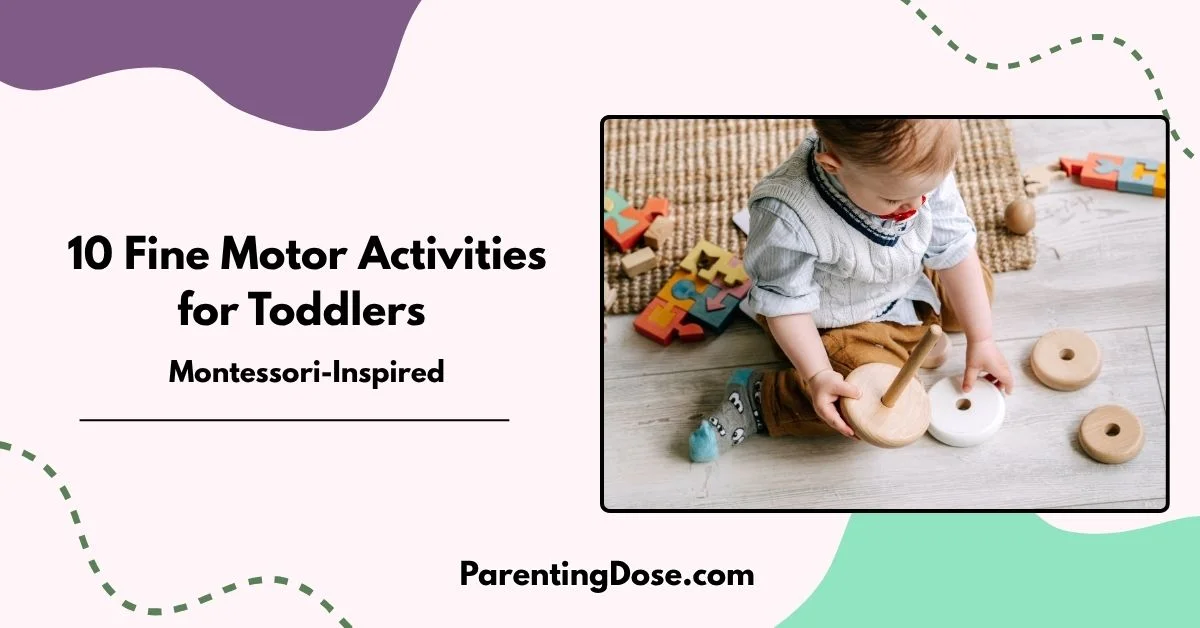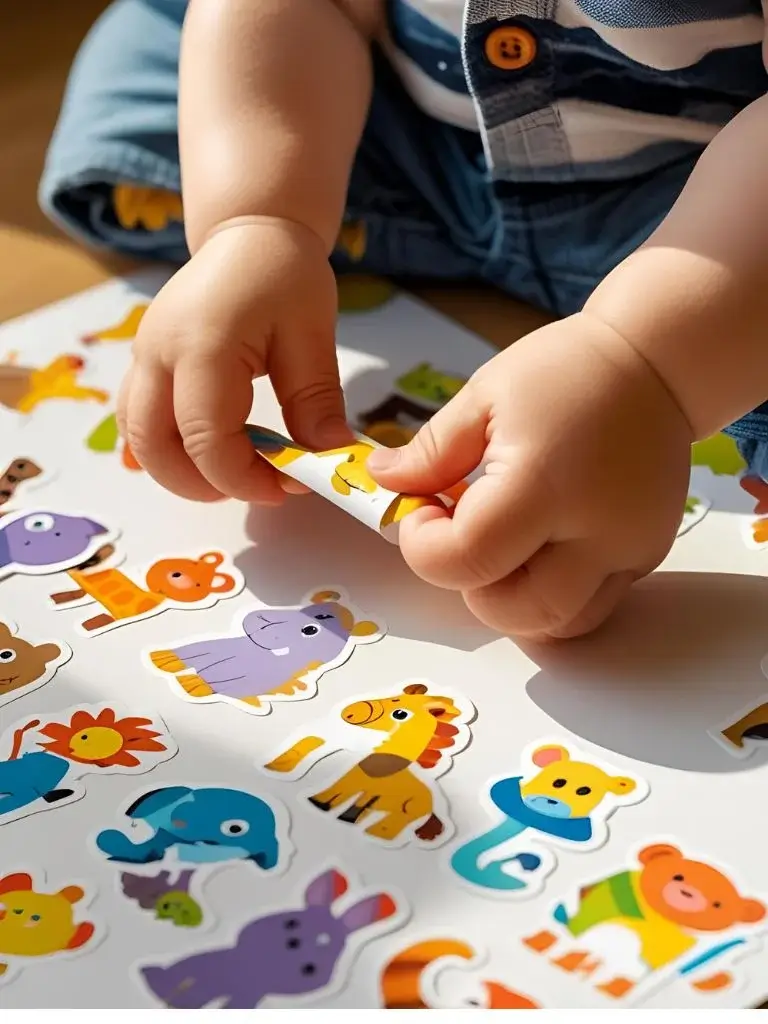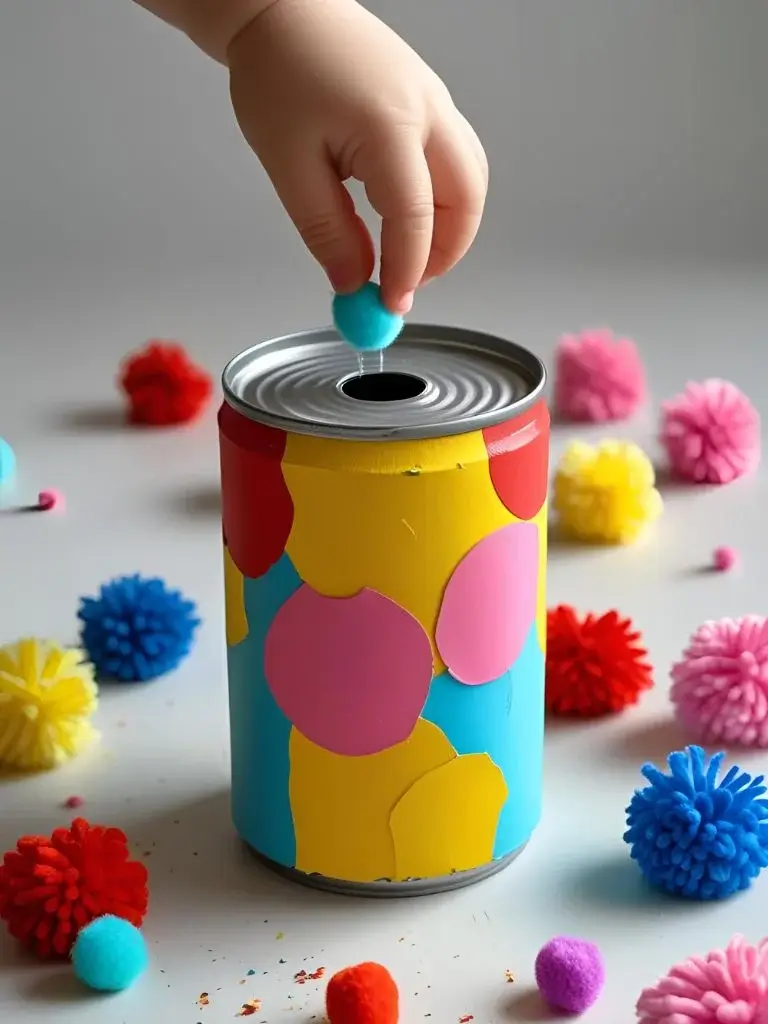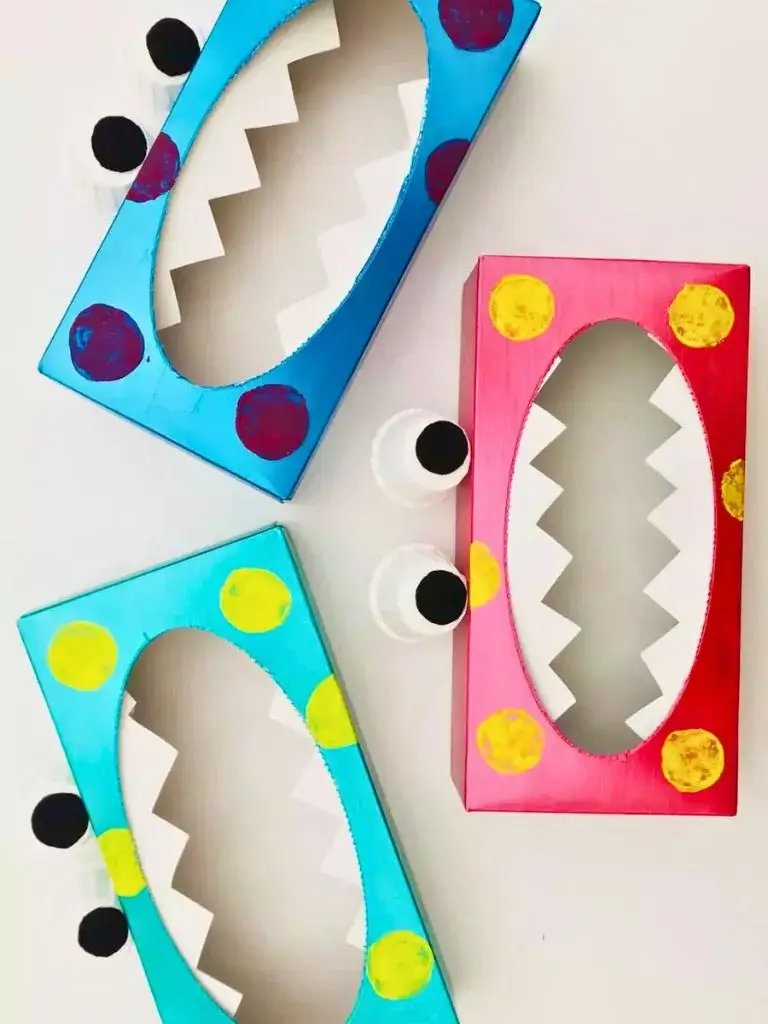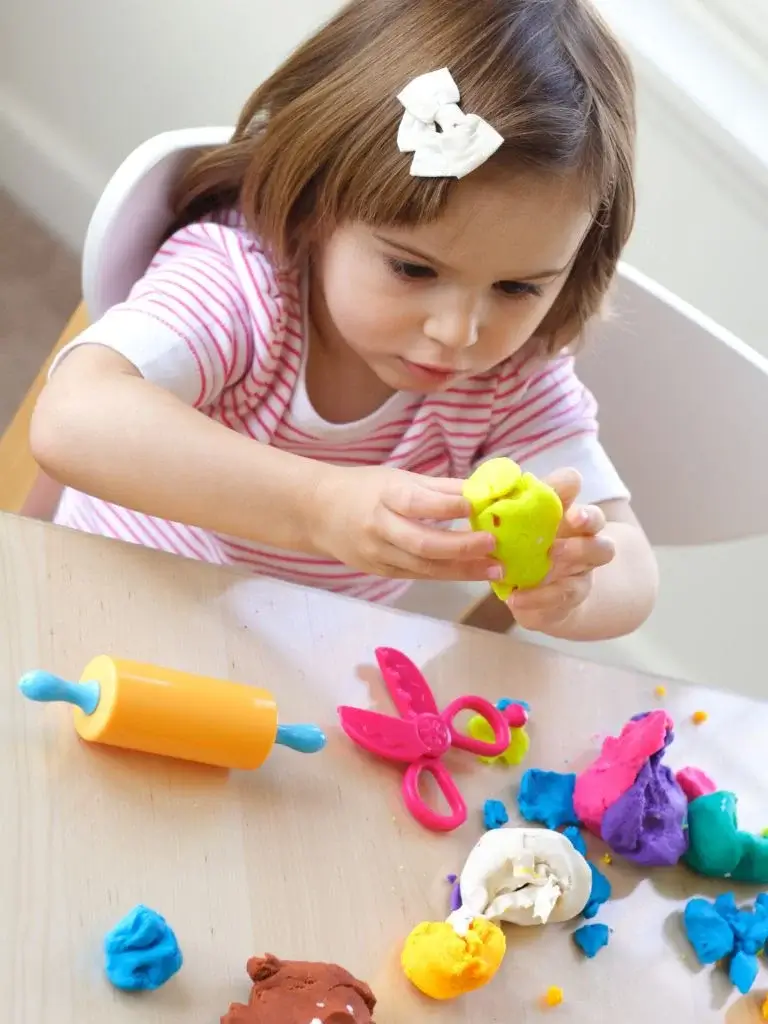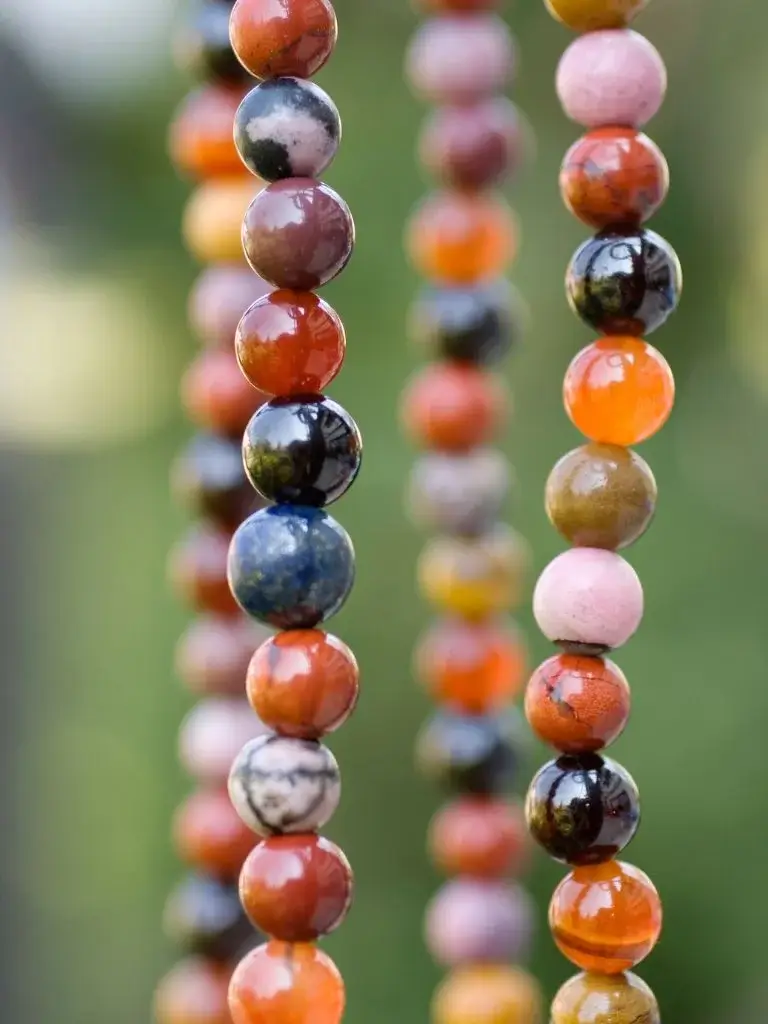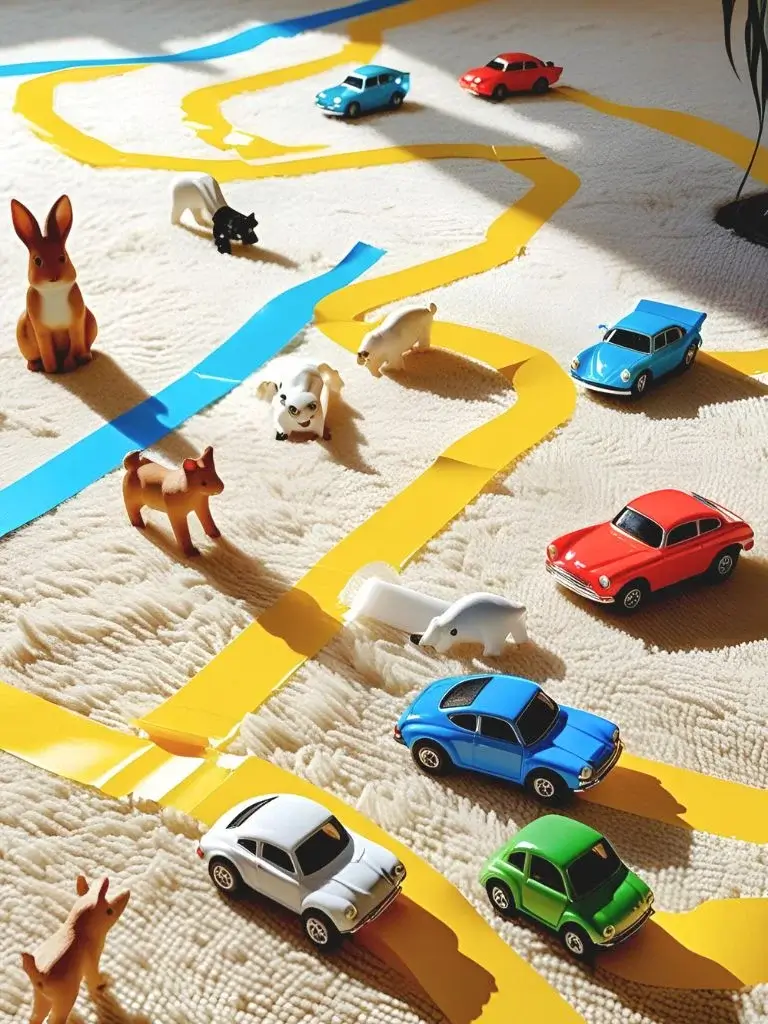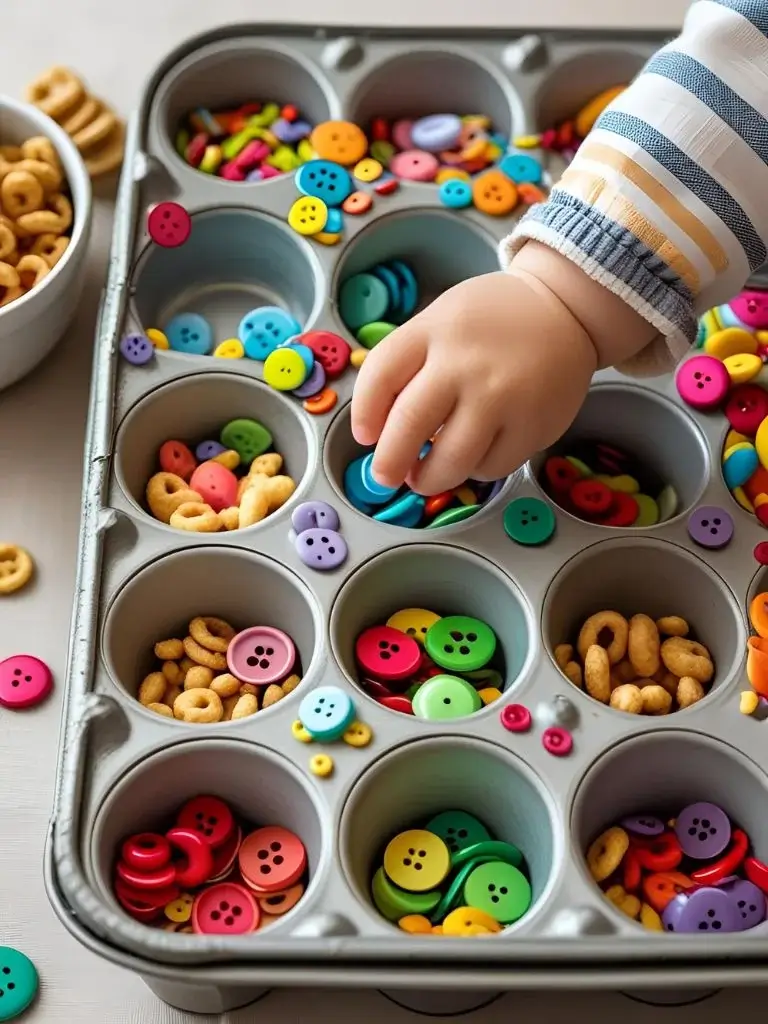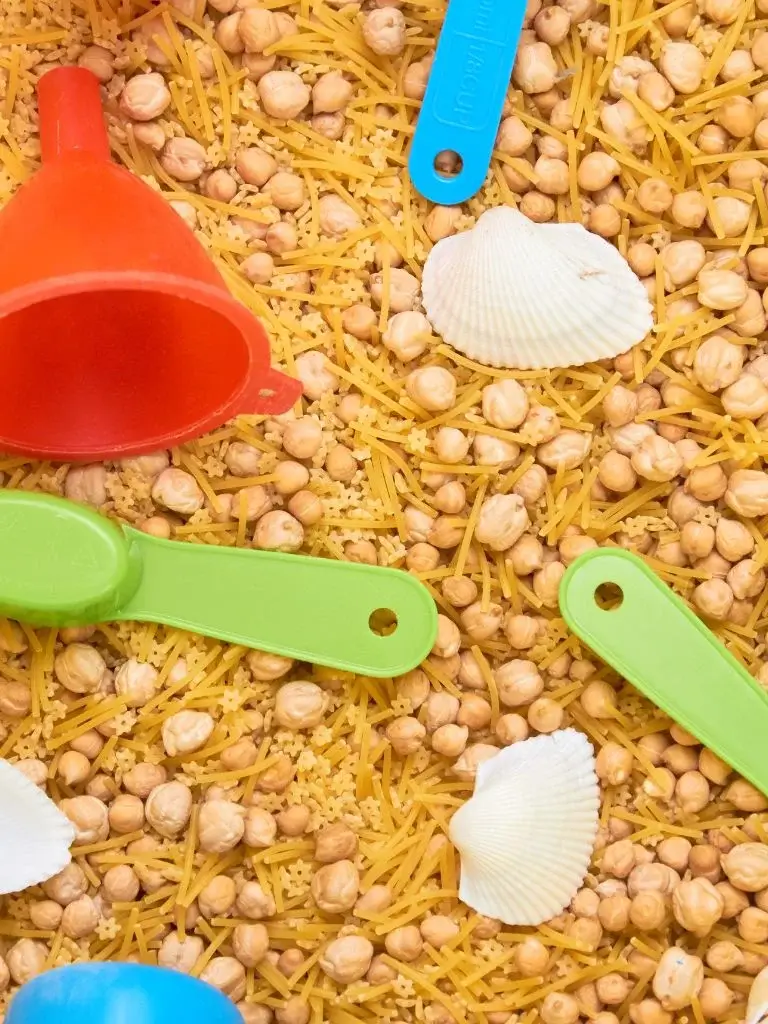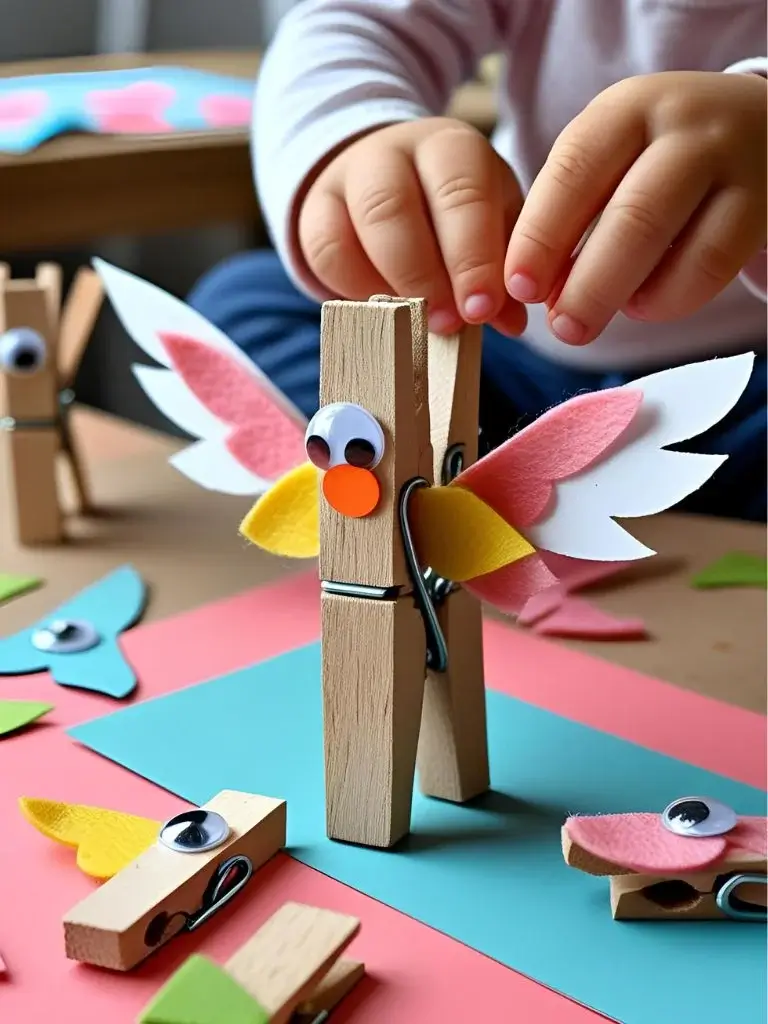Today, I’m sharing 10 tried-and-true fine motor activities for toddlers — the kind that actually keep them engaged, help build those little hand muscles, and (bonus!) give you a precious few minutes to drink your coffee while it’s still hot.
Whether you’re a stay-at-home mom, a working mom trying to fill weekend mornings, or just a mama looking for screen-free fun, this list is packed with easy wins.
Why Are Fine Motor Activities So Important for Toddlers?
Fine motor activities are essential in toddler development because they help strengthen the small muscles in a child’s hands, fingers, and wrists.
These are the same muscles they’ll use for everyday tasks like holding a spoon, brushing their teeth, buttoning shirts, and eventually writing with a pencil.
These activities also support hand-eye coordination, which is critical for everything from stacking blocks to feeding themselves. When toddlers pick up small objects, string beads, or peel stickers, they’re not just playing — they’re wiring their brains for coordination, focus, and problem-solving.
These activities foster patience, concentration, and independence. It teaches toddlers how to follow steps, try again after frustration, and complete tasks on their own — important skills for preschool and beyond.
So while it may look like “just squishing Play-Doh,” those tiny moments are building big futures.
1. Sticker Peeling Party
What you need: A pack of stickers and some paper (or an old Amazon box — let’s be real).
Peeling stickers off a sheet is deceptively simple, but it’s a powerhouse activity for developing fine motor control. It strengthens the pincer grasp (thumb and forefinger), builds patience, and encourages creativity.
Mom tip: Keep a stash of seasonal or themed sticker books in your bag for restaurants, doctor visits, or when you need a last-minute quiet-time activity.
My daughter once spent 25 minutes placing tiny butterfly stickers in a perfect line on the kitchen tile. I didn’t stop her. I made toast.
2. Pom-Pom Drop with a Recycled Container
Save those oatmeal canisters or Pringles cans! Cut a hole in the lid just wide enough for small pom-poms. Hand your toddler a bowl of colorful puff balls and let them poke each one in.
It’s all about precision. Their little fingers have to grasp, aim, and push — a triple threat for fine motor development.
Mom tip: Switch it up with tweezers or tongs to add an extra challenge for older toddlers.
3. “Feed the Animal” Game
Take an old tissue box, decorate it with a face (a monster, dog, or silly creature), and cut a mouth-sized hole. Then “feed” the animal with buttons, cereal, or even pretend food.
My favorite moment: My son named his monster “Chompers” and fed him dry Cheerios one by one for a solid half hour. You know what I did? My taxes.
4. Playdough Pull & Roll
If you have a toddler, you probably have a collection of dried-out Play-Doh under your couch. Freshen up that stash and invite your child to squish, roll, poke, and pinch. Add tools like cookie cutters, plastic knives, or even kitchen utensils.
Manipulating dough works on hand strength, bilateral coordination, and imaginative play.
I once handed my 3-year-old a ball of dough and a garlic press. She made 56 “worms” and named them all. We kept them in a Tupperware until the dog ate them.
5. Threading Beads on Pipe Cleaners
Stringing beads can feel intimidating with toddlers, but pipe cleaners make it easier than string. The stiffness helps guide the motion and gives their fingers feedback as they work.
This one’s great for road trips or waiting rooms. Just pack a small container of beads and a few pipe cleaners.
Use cereal (like Cheerios or Fruit Loops) instead of beads for an edible version. Great for snack + craft time.
6. Painter’s Tape Roads & Rescue
Tape down some roads or shapes on the floor (or wall), then stick small toys, buttons, or pom-poms along the way. Give your toddler the job of “rescuing” them by peeling them off one by one.
Draw a town on cardboard and let them drive cars or walk figurines through it.
My toddler once rescued every dinosaur from our “lava road.” She was so proud — and I got to vacuum in peace.
7. Water Painting
Give your toddler a paintbrush and a cup of water and let them “paint” the driveway, fence, or cardboard. It’s satisfying, low-mess, and oddly mesmerizing.
Why it’s genius: Holding a brush builds pencil grip. Plus, it’s calming. Like toddler meditation.
My go-to trick: I hand her a sponge too, and she “cleans” the house with it. Productivity meets play.
8. Button Sorting Station
Grab a muffin tin or egg carton and give your toddler a handful of buttons, coins, or colorful pasta. Sort by size, shape, or color.
My 2.5-year-old just dumped them all into one cup and yelled “SOUP!” But even that’s a fine motor win. Scooping, pouring, and grabbing still count.
9. Sensory Bin with Hidden Treasures
Fill a bin with dry rice, beans, or shredded paper. Bury small toys, buttons, or letter magnets and let them dig and find.
Tools to include: measuring cups, tweezers, scoops, or a little spoon. Bonus if you play “I Spy” together.
I once found a week-old carrot slice in our sensory bin. No idea how it got there.
10. Clothespin Creatures
Hand your toddler a pile of wooden clothespins and some felt or paper strips. Let them create silly creatures, match colors, or clip pins onto paper for fun shapes.
The squeezing motion is great for strengthening the hands and prepping for future pencil skills.
Keep a “busy bag” of clothespins and paper strips in the car for backup entertainment.
Conclusion:
You don’t need to be a perfect mom to support your child’s development. You just need to offer opportunities — little invitations to play, explore, and grow.
Fine motor skills are the unsung heroes of toddlerhood. They help with everything from holding a crayon to zipping a coat to feeding themselves without flinging yogurt across the kitchen.
But beyond that? These moments of connection — sitting beside your toddler, watching them focus, hearing their giggles — that’s the magic. That’s what they’ll remember.
